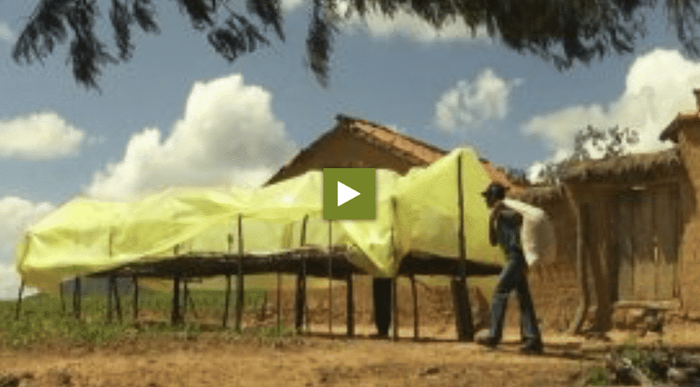When you protect the groundnuts from moulds and aflatoxins your yield is going to be better.
Groundnuts and peanuts can both be attacked by the invisible poison aflatoxin. Aflatoxins are bad for animals and peoples health. Healthy nuts are not broken and have a nice colour. Unhealthy nuts have brown or grey spots and are potentially green in the inside. There could also be a greenish or blackish mould on the surface of the nuts. They have a bad smell and taste bitter.
Moulds development
Aflatoxins develop out of moulds in the soil. Moulds grow even more when it is moist and hot. If many weeds are on the field, the plants get moist and more diseases result. If you harvest to early the pods shrink and if you harvest to late, the pods break and moulds can settle down. Moulds can be transmitted from bad to healthy nuts with wind or with contact.
Healthy groundnuts
To get only good groundnuts separate the small, broken and diseased pods from the healthy ones. Never eat the bad groundnuts and also don‘t give them your animals to feed. Dry the healthy groundnuts on a tarp and stir them several times a day.
The groundnuts should not lay on the soil. They also have to be protected from rain, so you should make a solar dryer for them. With wooden poles you can built a raised platform, that should be 1 metre high, 12 metres long and 2 metres wide. Add a net to the platform to make sure nothing falls down. Then cover the platform with a plastic shed, but keep the sides open, so that air can stream through.
Put the healthy groundnuts into woven bags and store them in a cool, dry place. The bags shouldn‘t touch the walls or soil, so that they don‘t get moist. Watch out for mice and rats because they are dirty and make holes in the bags. Therefore, moisture could get to the pods.



















